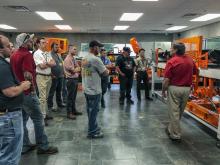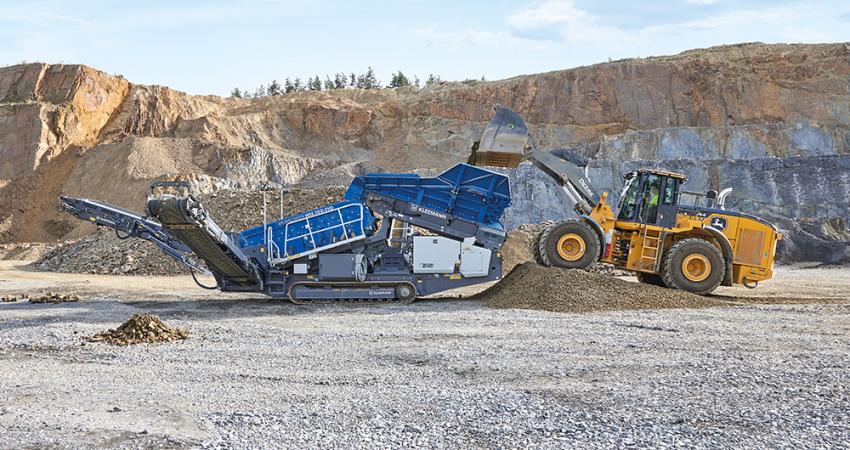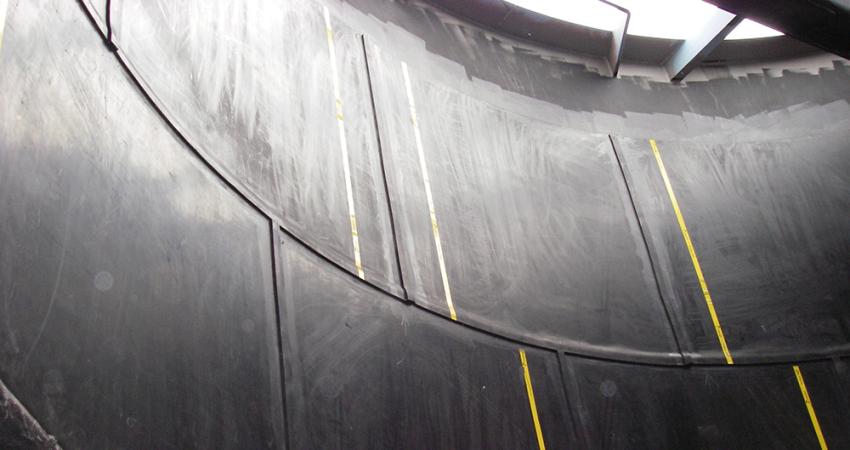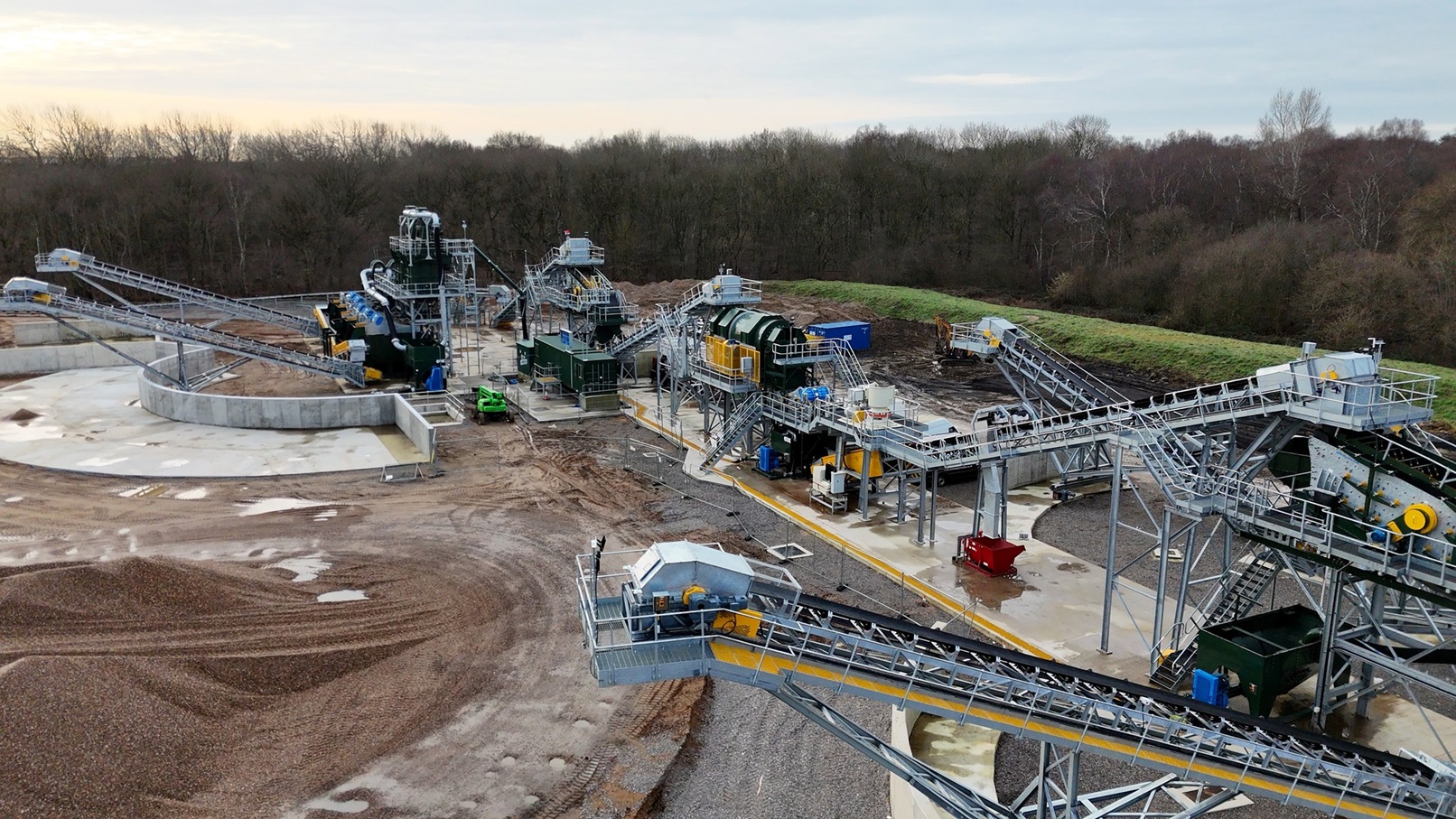
After investing in a new premium plant, Cemex’s Swinderby Quarry is poised to significantly increase its high-quality sand and gravel production. Guy Woodford reports
The new multi-million-pound state-of-the-art CDE plant looks impressive as you turn off the highway into Cemex UK’s Swinderby Quarry near Lincoln in England’s East Midlands.
I am visiting the around 450,000 tonnes a year site, Cemex UK’s biggest land-based sand and gravel operation, in mid-January 2024 as its giant new production plant is undergoing final testing.

Quarry manager Vanessa Smithson, Kevin Cage, Cemex UK head of aggregates operations, and Mark Brown, Cemex Midlands aggregates operations manager, are talking to me in the quarry’s administration offices before my Monday morning plant tour in the ice-cold winter weather.
The advanced CDE plant installation is Cemex UK’s largest sand and gravel-based site investment in the last decade. Increasing Swinderby Quarry’s prized Trent Valley sand and gravel output to up to 700,000 tonnes a year, the new plant features a CDE wash plant, CDE Infinity screens, a Metso Nordberg GP100 cone crusher, two grading screens with Tema Isenmann screen media, a Wileman barrel washer, and circulating conveyors.
At the quarry face, sand and gravel are extracted by a Komatsu PC490LC-11 hydraulic excavator and fed into a 20-tonne hopper feeder by a Komatsu WA480 loading shovel. A 1.2-mile long, up-to-400-tonnes-per-hour Canning Conveyor modular stringer field conveyor system transfers the sand and gravel to the production plant. The conveyor system comprises a radial stockpiler and five separate conveyors fed from the skid-mounted hopper feeder.
The hopper infeed features a grizzly screen with a 150mm aperture to separate and collect the oversized product. Hydraulic cylinders actuate it to pivot up and eject collected material when necessary. The screen can also be unhooked and separated from the hydraulics for transportation.
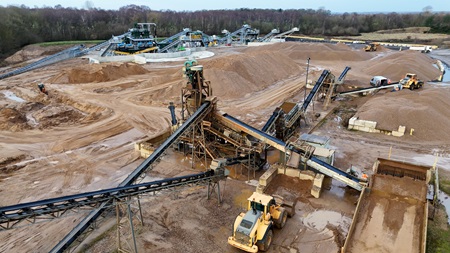
At its maximum length, the Canning Conveyor will save an estimated 250,000 litres of fuel per year, the equivalent of taking 143 cars off the road. In addition to reducing the site’s dust and noise, Swinderby Quarry’s new production setup cuts CO₂ emissions by around 50% per tonne of gravel and sand, in line with Cemex’s Future in Action programme.
Highlighting other reasons why Cemex UK opted for a CDE plant at its flagship sand and gravel quarry, Cage says: “Part of it was the size of the project and needing a manufacturer that could deliver what we wanted to our timescale. The price was right, and the software and AI [artificial intelligence] element linked to plant operation and condition monitoring and maintenance was good. Of all the companies that tendered, CDE was the best supplier to meet our needs.”
When asked about choosing a Metso Nordberg cone crusher within the plant setup, he says: “Metso crushers are always well-engineered and good quality. You cannot fault them.”
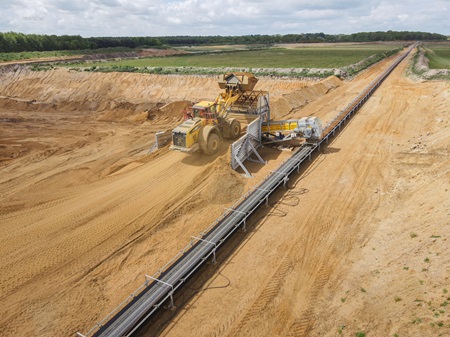
Smithson notes that she and her team have been working closely with a CDE project engineering manager during the plant installation and testing. “Bad weather conditions did not help with installation. They had to dig down where the plant was going and build it back up. It delayed the project by four to five months. Now, you look out there at the plant, and things are really good.”
Asked about what will happen to the current Swinderby Quarry plant, Cage says it will be stripped down and used in various locations across the UK as individual pieces of equipment.
Located on the old RAF Swinderby airfield, south of Swinderby village, adjacent to the A46, Swinderby Quarry has a 0-40mm product range, with a 50-50 split between sand and gravel sales. Customers in Nottinghamshire, Lincolnshire, and Leicestershire purchase the products for largely concrete and asphalt production, with some of the products also used in Cemex’s ready-mix concrete and asphalt businesses. Smithson says the most popular products are 0-4mm sand and 4-20mm gravel. Fulfilment is split between Swinderby Quarry’s customers, who collect their product orders, and the remainder delivered by the site’s 12-strong truck fleet.
There is also planning permission for a third party to install a bagging facility within Swinderby Quarry to take a strong portion of the additional CDE plant-generated sand and gravel.

Ten Cemex employees run Swinderby Quarry from 7am to 5pm Monday to Friday and 7am to 12pm on Saturdays. Smithson says an additional employee may be required due to the new CDE plant’s higher production volume.
CDE’s SmartTech suite of digital technologies, including SmartTech Prevention, which uses CheckProof as the platform, will help production run smoothly, partly by allowing swift and easy communication between Cemex and CDE personnel. “Any defect alerts and maintenance scheduling will go through CheckProof,” says Cage.
Smithson explains that dewatering at Swinderby Quarry occurs “24/7" to keep pond sizes low and maximise work and stockpile material space. “If we have to top up the quarry’s freshwater lagoons, we can pump back water into them. We can do that with a two-valve system.”
A planning application has been made to start extracting material from another part of Swinderby Quarry within the next three years. The site has up to eight million tonnes of reserves.
A three-stage solar panel installation is part of wider plans to decarbonise Swinderby Quarry’s production. The quarry is designated a Cemex Regenera site, a business specialising in providing circularity solutions to extend the lifecycle of products and materials by reusing them as value-added products.
“We have a very good relationship with neighbouring residents,” notes Smithson, formerly based at Cemex’s now-closed commercial sand and gravel extraction site adjacent to Attenborough Nature Reserve near Nottingham.
After seven years as Swinderby Quarry manager, I ask her how her role has evolved. “Your hats are always changing, from working with staff and handling health and safety, well-being and development matters to carrying out machine checks. More checks need to be done now, as we have a massive asset out there that we need to maintain. We need to look at how much electricity we use. Every penny spent counts. We are busier than ever.”

Speaking about the high-spec plant installation at Cemex’s Swinderby Quarry, Colum Bryson, CDE head of operations – UK & Ireland, says: “While CDE is well versed in delivering large turnkey projects there were a few unique aspects in this project. We can accommodate two feed sources, whether from CDE’s L45 hopper or directly from Cemex’s existing network of land conveyors culminating in a radial stockpiler with motorised trouser leg chute. The CDE plant is designed to process 450-tonne feed as dug sand and gravel ballast which contains lignite. CDE will employ the use of two CFCU 200 upward flow classification units to efficiently remove lignite and accurately achieve the desired sharp sand spec.
“The CDE plant will produce two sands, one fine and one course. We have the unique ability to blend 0 to 100% of fines sand into the coarse sand via a motorised blending chute, which the plant's main HMI controls can electronically operate. The CDE plant also incorporates a crushing loop for the +20mm product with a bypass option.
“As with most projects of this scale, CDE spent significant resources in the design and technical stage making sure the client specifications were met. We worked with their project management team and also very closely with Vanessa and her operations team to ultimately get input from people who will run the plant to ensure they had their say. This process involved several site visits and remote workshops to ensure all parties were content with the plant.”

Bryson says CDE made a particular effort to ensure that Cemex Swinderby’s high H&S standards were met, many of which exceed the British Standard. “We paid particular attention to wear liner access, removable lightweight guards, and extensive walkway access for maintenance. Extensive site lighting has also been provided so the plant can operate safely in the darker winter months.
“When site works kicked off, CDE worked closely with their CDM co-ordinator on-site during the build, ensuring that every personnel was kept safe during a complex build program involving cranes and assembly at height. We are now in the commissioning phase and producing materials with some fine-tuning and optimisation to deliver precisely to Cemex requirements. Our world-leading Proman project management methodology executed the entire project to help ensure we seamlessly coordinated and delivered each project phase alongside working with Cemex. We are now looking forward to full production.”

